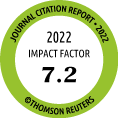|
Background:
There are several
studies that deal
with the evolution
of patients with
occupational
rhinitis/asthma as a
result of
immunoglobulin (Ig)
E-mediated allergy
to latex. However,
none have focused on
the course of this
illness in non-occupational
settings.
Objective: To
ascertain patient
compliance in
individuals
diagnosed with latex
allergy with respect
to following
avoidance measures,
as well as to
determine the
frequency and type
of symptoms that
emerged as a result
of exposure to latex
when receiving
healthcare (surgery,
gynecology,
dentistry), as well
as other sources of
exposure.
Methods: This
is a retrospective
study of patients
diagnosed with
allergy to latex in
our department over
11 years. Of the 24
patients, we were
able to contact 23
(96%). Twenty were
female. Mean age at
diagnosis was 36
years (10-67). Mean
time of follow-up
was 5 years
(0.1-11). At the
time of diagnosis,
patients were
informed of the need
to avoid contact
with latex, with
special emphasis
given to surgical,
gynecological, and
dental exposures.
Results:
Regarding latex
exposures in
healthcare settings,
5 patients underwent
surgery. Four notifi
ed of their
diagnosis, hence
avoiding contact.
The patient who
failed to inform of
his allergy
developed laryngeal
angioedema. Sixteen
patients were
exposed via
gynecological
examinations: Of
these, 13 avoided
contact with latex
gloves and three
tolerated them.
Twenty patients were
exposed to latex
during visits to the
dentist. Of these,
19 avoided latex and
one tolerated it. A
further 7 patients
(30%) presented
allergic syndromes
caused by other
sources of exposure.
These included 4
episodes of contact-induced
angioedema due to
gloves and balloons
and 4 episodes of
bronchospasm as a
result of being
present in
atmospheres with
high latex contents
hospitals and
rooms with balloons
. Finally, 4
patients (17%)
manifested allergic
episodes induced by
latex-related foods.
Conclusions:
The vast majority of
the patients
diagnosed with latex
allergy informed of
their diagnosis when
seeking medical care
during which they
would be exposed.
However, 30% of the
patients presented
some kind of
allergic episode due
to another type of
exposure and 17%
presented allergies
to related foods.
Key Words:
Latex. IgE-mediated
allergy. Follow-up.
|



